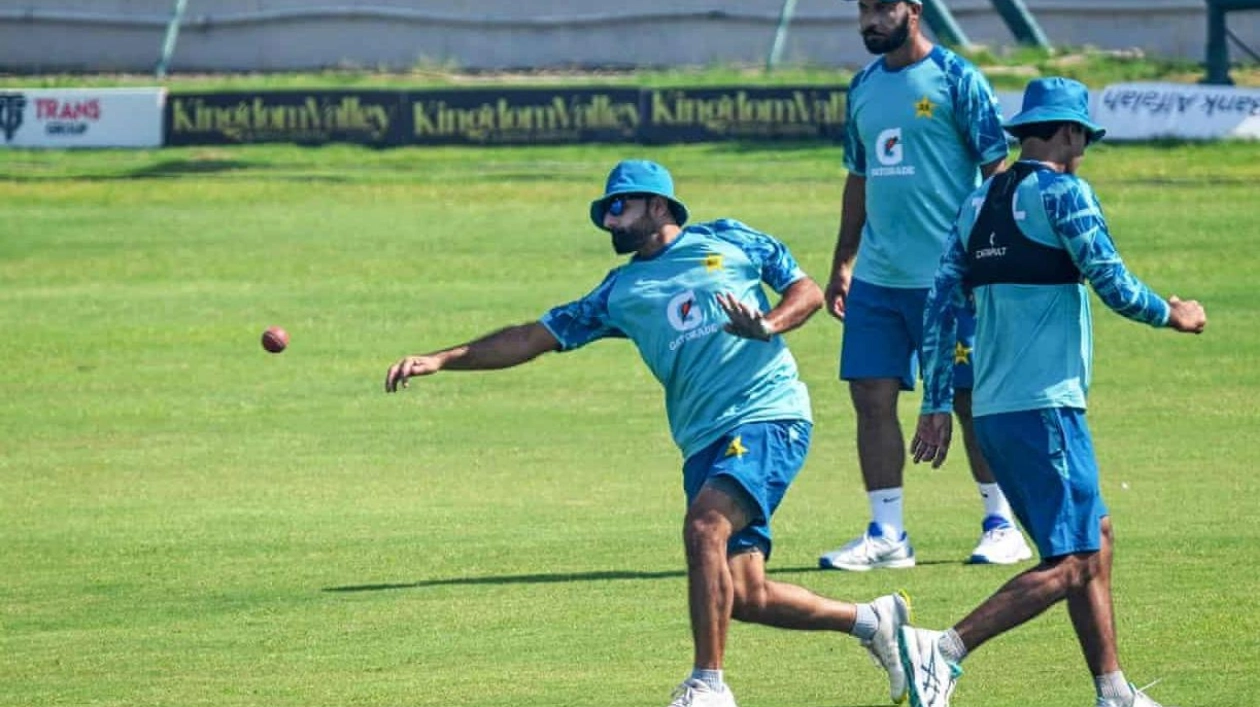“There is no change in the approach,” Azhar Mahmood, Pakistan’s assistant head coach, asserted on Monday while addressing queries about the team's recent tumultuous 72 hours. Moments after his statement, the squad for the second Test was announced, revealing a complete shift in strategy. Just seven weeks prior, Pakistan had deployed an all-pace attack against Bangladesh; last month, their captain, Shan Masood, mentioned they would prepare seam-friendly pitches for this series due to their lack of quality spinners capable of taking 20 wickets in a match. Last week, their two specialist seamers bowled 57 overs; this week, only one remains, and he is a part-timer. In contrast, they have opted for a spin-centric approach.
Despite Abrar Ahmed, their best spinner, being sidelined with dengue fever, Pakistan has included Zahid Mahmood, Sajid Khan, and Noman Ali in their lineup. England is most acquainted with the 36-year-old Mahmood, who played twice during their last visit two years ago, marking his only Test appearances. He managed 12 wickets, half of which were against Jimmy Anderson, Jack Leach, or Ollie Robinson, but conceded at a rate of 6.94 an over, making him the most expensive bowler in Test history among those who have delivered at least 350 balls, with Ireland’s Ben White ranking second at 5.69.
Noman, 38, replaced Mahmood for the final game of that series, and his most recent Test was in Sri Lanka in July 2023. Sajid has featured in eight Tests, the latest being in January. With Pakistan’s domestic first-class competition, the Quaid-e-Azam Trophy, running from October to December, none of the trio has played red-ball cricket since January, and Noman not since last October. Pakistan is relying on the unconventional tactic of playing successive Tests on the same, already worn pitch, hoping it will eventually offer significant turn. Mahmood maintained the plan was for the pitch to start spinning last week, though if that were true, they might have selected more than one specialist spinner for that game. “We planned to go with a spin pitch against England and wanted the ball to spin after day two,” he explained. “Our instructions were for a spin pitch, but it did not turn even on the fifth day. Now, I believe the pitch for the next Test, on the ninth day, will take turn.”
On Monday, Masood, head coach Jason Gillespie, head curator Tony Hemming, and several members of the selection committee engaged in a heated discussion near the pitch for nearly an hour, indicating this strategy has not been universally endorsed. By using the same pitch, Pakistan is, paradoxically, pioneering a new approach. “We can speculate on what we think it will do, but we won’t truly know until a day or a session has been played on it,” said Ben Stokes, who has never encountered such a scenario and has no idea what to expect. “You’d hope it offers spinners more than it did last game. I’m not sure the bowlers will be pleased, but you can still see the footmarks from the last Test. Who knows what will happen?”
While Pakistan’s bowling lineup has undergone a significant transformation, they have made only one change to the batting order: Kamran Ghulam debuts in place of Babar Azam, who, along with the first-choice seam pair of Shaheen Shah Afridi and Naseem Shah, has been rested for the remainder of the series. Mahmood stated these decisions were always part of the plan: “We knew we had more tours ahead, so we knew changes would be necessary,” he said. “It’s not a reaction to a result.” England’s adjustments have been minimal: Stokes, fully recovered, replaces Chris Woakes, while Matt Potts joins his captain and Brydon Carse in an all-Durham pace attack, with Gus Atkinson rested. “The seamers have bowled a lot of overs,” Stokes noted. “It’s an ideal time for them to rest and recover.”






